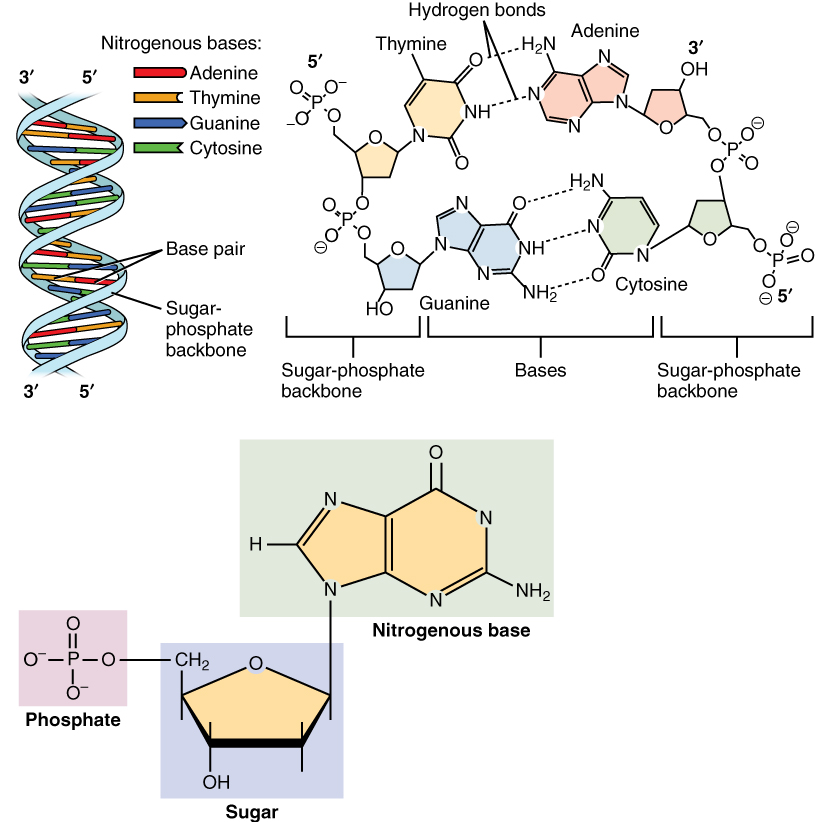New study hints at spontaneous appearance of primordial DNA
Just the other day we had news of how the “stuff of life” was formed from basic chemical components – hydrogen cyanide and hydrogen sulfide – and now another suggestion on how nucleotides can form oligomers spontaneously. Nucleotides are the individual ‘-mer’ units of DNA or RNA polymers – polymers being long chain molecules made of many identical or similar sub-units. In the case of DNA each -mer has a nitrogenous base – Adenine, Thymine, Guanine and Cytosine, while RNA uses Uracil instead of Thymine – to which is attached a ribose sugar and a phosphate group or two.

RNA has long been known to act as an enzyme, a molecular machine, and forms most of that key molecular machine in all cells, the ribosome. When RNA is performing enzymatic processes it’s called a ribozyme – and the key enzymatic activity of ribosomes is carried out by RNA. Even DNA can act as an enzyme, though so far only in the lab: deoxyribozyme
The interesting question, for astrobiologically minded folks such as readers of this blog, is whether the newly observed spontaneous polymerising of RNA/DNA can lead to ribozymes able to catalyze their own formation? If such can be observed to form spontaneously, then Life-as-We-Know-it can happen anywhere with the right conditions. But – and this is a more subtle question – how different can it be from our exact version? For example, there are 20 amino acids used by our kind of life, but potentially hundreds or thousands that *could* be used. Then there’s the Genetic Code – the specific way that sequences of the DNA nucleotides are translated into the strings of amino acids that make up proteins. The specific three nucleotide code which “spells out” the amino acids in our proteins is just one of many possible codes, of which there are about ~1.5 x 1084 possibilities to choose from. Why this specific set? And why are deviations from this specific Genetic Code so rare in living things?
The fact that the Code is seemingly arbitrary, as we have successfully changed it in organisms, also poses the question: Was our Genetic Code chosen? If so, by Who?
